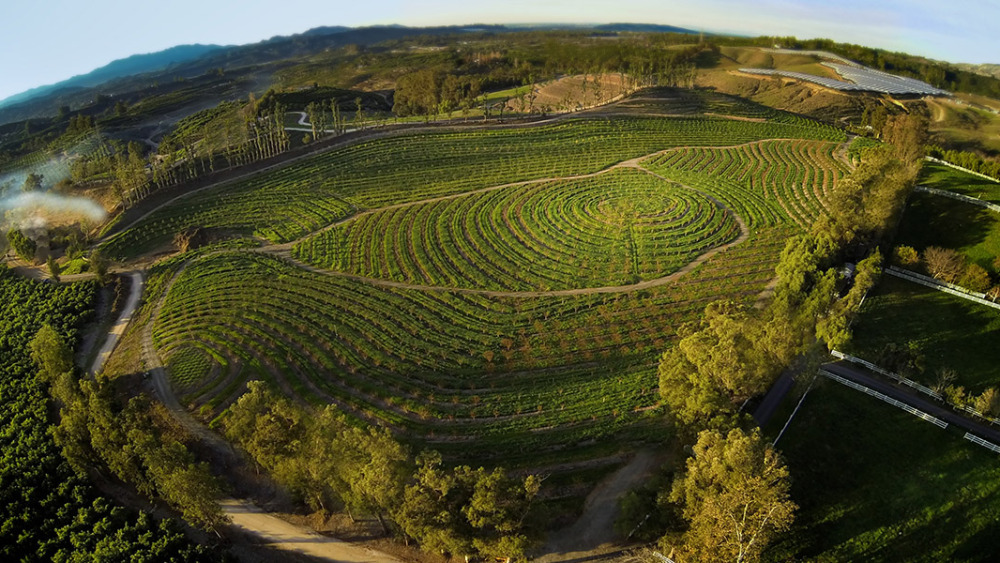DOCUMENTARY REVIEW: The Biggest Little Farm
THE BIGGEST LITTLE FARM — 4 STARS
Sometimes the craziest ideas become the most fulfilling ones when they come to fruition. In 2010, wildlife cameraman John Chester and his private chef wife Molly decided to merge their interests and turn their lives upside-down. Combining his respect for nature with her excitement for food, the Chesters gave up city living in Los Angeles to move an hour north and start a true traditional farm that exists harmoniously with nature. In the hands of an artist and filmmaker, The Biggest Little Farm takes would look like a capricious and half-hearted whim fit for a green reality show on basic cable and turns the the documented endeavor something ambitious, important, and miraculous.
This documentary introduces the audience to Apricot Lane Farms on the brink of potential disaster. The scorched earth of the Southern California wildfires of 2017 caused by the worst drought in 1200 years are creeping closer to three sides of the place the Chesters have come to regard higher than merely a home business. With that “never dream we would ever get to this point, where we have so much to lose” threat unanswered until later, the film takes us back to the genesis. Jason Carpenter’s charming animated sequences paraphrase and visualize the thought process that began as a promise to a family dog named Todd.
Over the next seven years stamped as chapters, The Biggest Little Farm examines the arduous path the Chesters chose to build a meaningful life of purpose in Moorpark, California. Fostered by agricultural consultant Alan York, Apricot Lane Farms was planned down to the molecule to achieve the highest level of biodiversity possible. That’s organic and free-range to the nth degree when you hear and observe York help the Chesters transform 200 acres of dried and dead valley land into a lush and vibrant new ecosystem designed to produce and sustain simplicity in all this diversity.
LESSON #1: IT ALL STARTS AT THE CELLULAR LEVEL — Dig through your old elementary science years and you may remember many food chain and food web lessons sorting producers, consumers, predators, and prey. The proper conditions for the success of Apricot Lane Farms starts at the forgotten link of the food chain that people turn those noses away from: the decomposers. Remember the creepy and crawling things that ate dead stuff? That’s where the basics of enriched soil begin at the microbial level. Without soil, nothing can grow and no animals can eat.
True to one thing’s trash is another thing’s treasure, Alan York’s piece-de-resistance for the Chesters was a liquid composting process that “alchemized death to life.” Beginning with a cover crops that put roots in the ground and “energized by the impermanence of life,” the renewed plant life jump-started the evolution of the next bigger things. Over the steady expansion to 200 plant and animal varieties, Apricot Lane’s efforts are merged with the surrounding environment to create a symbiotic habitat of renewal and challenges to balance the needs of the farm with the needs of nature.
LESSON #2: FARMING IS HARD WORK AND HIGH COST — Though the camera’s eye on the subject paints gorgeous serenity, nothing about what you’re watching is easy. A veteran farmer (including this writer’s grandparents) will tell that farmers are the biggest gamblers in the world. At different points of triumph and adversity, innumerable factors of science, heart, blood, sweat, tears, finances, support, trust, and good old Mother Nature graced or beset John and Molly Chester and their admirable plight. It took years to see returns on investments that overcame the losses.
Thanks to John’s Emmy-winning production background work, The Biggest Little Farm makes the perilous and painstaking looks sumptuous and rich, all backed by a lovely musical score by Jeff Beal. The dynamic and striking natural photography comes from voluminous combined work of John Chester and four other cinematographer collaborators including fellow Emmy winners including Mallory Cunningham and Kyle Romanek, TV doc specialist Benji Lanpher, and Chris Martin covering the time-lapse sequences. The sweep across close-ups, slow-motion, and vista work from drones is entirely captivating. As usual, the MVP of every documentary is the editor and Amy Overbeck crafted a tidy, yet compelling 91-minute gem.
LESSON #3: LET’S DO MORE OF THIS — The story of The Biggest Little Farm may be a niche, but it has the power to inform and inspire similar wellsprings of progressive innovation and change. Their expansive experiment shows that establishing equilibrium and responsible land use can still net results, feed our society, and improve the planet that keeps us alive. The work of Alan York and the Chesters should be shown in every classroom in America, young and old, to spark a few more humble dreamers like them to take up this cause.
LOGO DESIGNED BY MEENTS ILLUSTRATED (#787)


